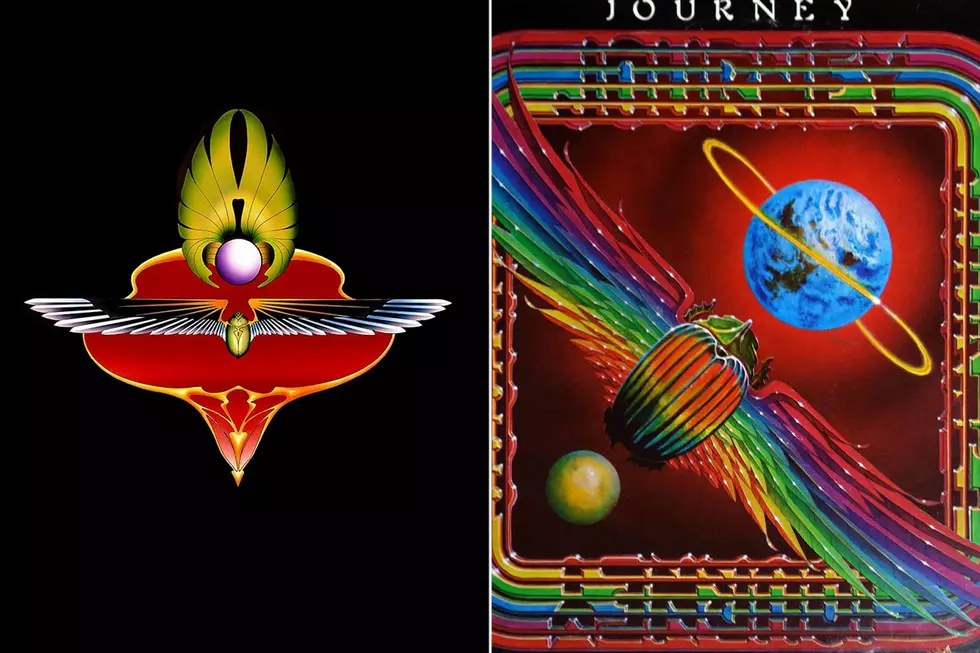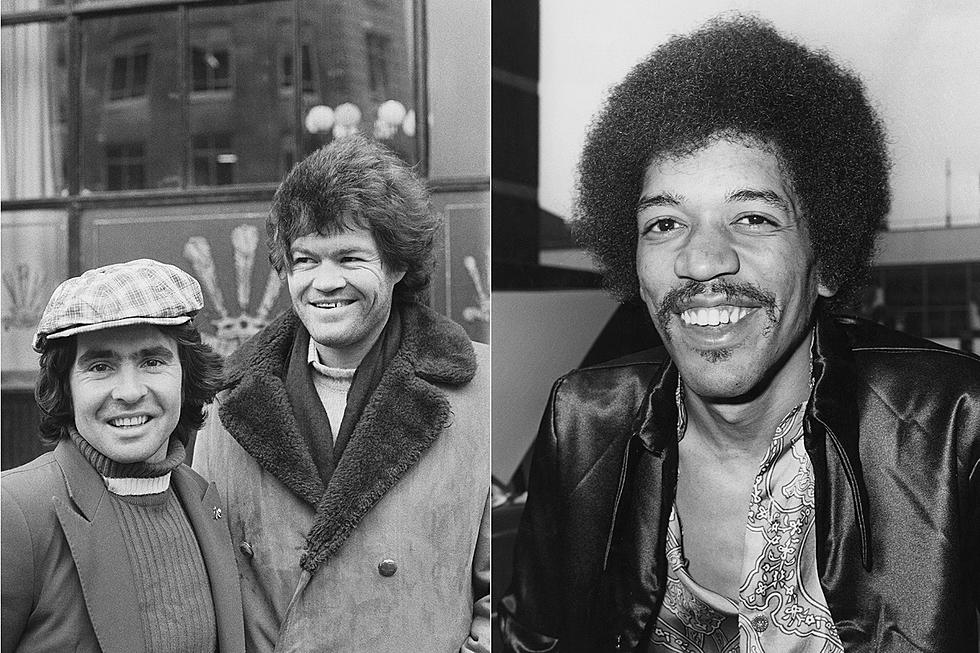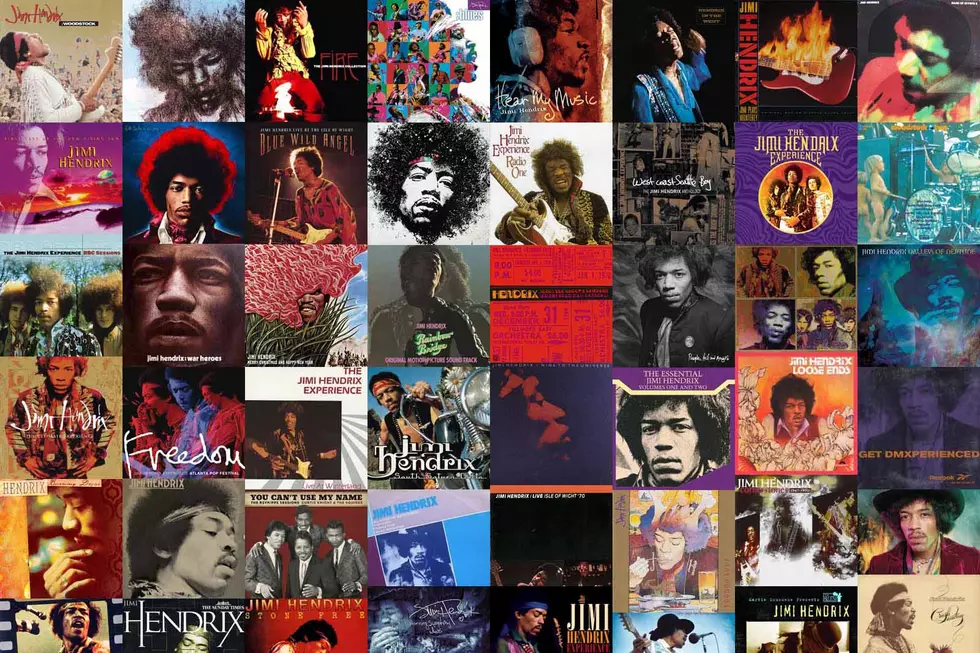
How an Unused Jimi Hendrix Album Cover Led to Journey’s Scarab
Near the end of the video for Journey's new single "The Way We Used to Be," an animated proxy of guitarist Neal Schon appears to transform into a dung beetle. It would be an odd visual choice if not for the insect's importance in Journey lore, appearing — in various fantastical forms — on multiple album sleeves.
But why a beetle to begin with? The answer involves another rock giant.
"We got the job to do a Jimi Hendrix album cover," visual artist Stanley Mouse told NBC Bay Area in 2017, referencing his creative partner Alton Kelley. "And just as we finished it, [Hendrix] died, so the album cover never came out.
"But it was a scarab beetle with wings — very art nouveau, all done, airbrushed," he added of the image, prints of which are currently available for sale under the title "Power of Soul." "And when we got back to San Francisco … I knew the bass player in Journey, and he came over and said, 'Hey, can you do us an album cover?' So we morphed the Jimi Hendrix beetle into the Journey emblem, and that's where the Journey scarab was born."
It may be an unusual choice for a cover centerpiece, but the scarab immediately stood out on the front of Journey's sixth LP, 1980's Departure, as a rainbow-hued winged creature flies among the planets. Journey obviously dug the vibe: Two projects from the following year, the live LP Captured and blockbuster Escape, reworked the bug into new contexts.
The meaning of these images didn't need to be decoded: They're just striking as abstract art pieces. But Mouse, a regular collaborator in the psychedelic scene (including the Grateful Dead), offered his own trippy explanation for the iconography.
"I did the Captured album in 1981, and it is a scarab that carries its eggs in a dung bowl," Mouse told the Washington Post in 2015. "When the eggs hatch, the babies feed off the dung and become beetles. It’s the regeneration of life. Escape is the beetle breaking out of a planet, which was the dung ball he was pushing around."
Asked if the band was aware of this meaning, he replied: "I didn’t even know about it. Some Japanese media people came to interview me about it. So I had to do some research. I went into ancient Egyptian mythology and learned myself."
By this point, Mouse had been a Journey regular for years, having earlier co-created sleeves with Kelley for 1978's Infinity and 1979's Evolution. But the succeeding dung-y era could be the most distinctive: bold enough to warrant picking the LPs off the racks, weird enough to keep fans intrigued years later.
The beetle also became a signature Journey reference, even spilling into other forms of media. A 1982 Journey Escape Atari game tasked users with guiding the band to the scarab spaceship amidst "hordes of Love-Crazed Groupies, Sneaky Photographers, and Shifty-Eyed Promoters," according to the manual.
Other artists prepared modified scarabs that appeared on subsequent Journey album covers – including 2001's Arrival, 2005's Generations and 2011's Eclipse – but the image remained crucial for Mouse on a personal level.
"I was working with [Kelley] for many years and that came to an end just before Escape," he recalled in Neil Daniels' 2012 book, Don't Stop Believin': The Untold Story of Journey. "We did a few Journey covers together. I did the Escape art by myself and, now that I think about it, the album was well named for my escape.
"I had escaped many things at that time when I look back at it," Mouse continued. "I had an agent that was also Journey's marketing agent, Jim Welch. My lady was pregnant with my daughter at the time (might be something to read into that). My influence was from a German artist who did a similar bursting, breaking-out smashing explosion. I don't recall his name, but it left a big impression on my mind. … You might say Captured and Escape was some 'breakthrough' art for me."
Journey Solo Albums Ranked
See Neal Schon Among Rock’s Forgotten Supergroups
More From 103.7 The Hawk










